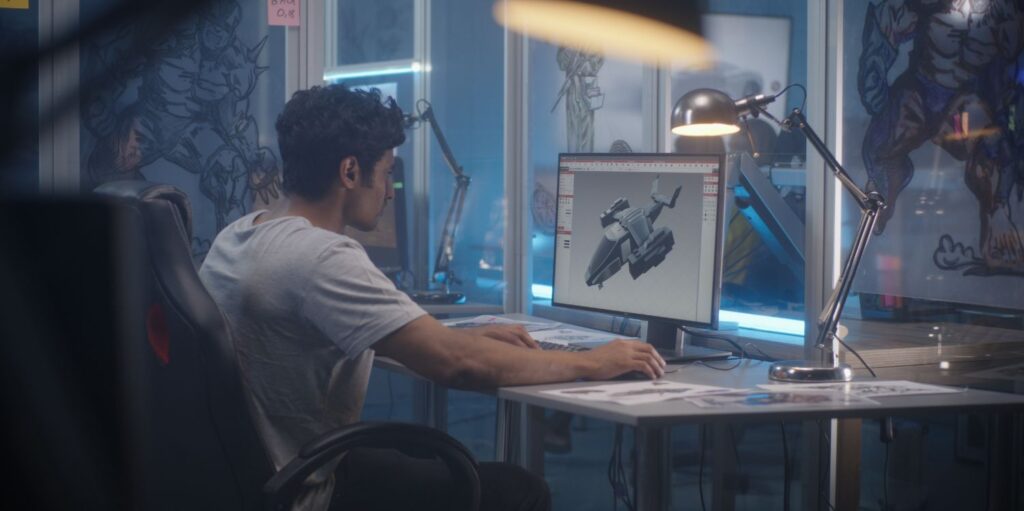Introduction
3D modeling for games is a complex and multifaceted process that requires a blend of artistic creativity and technical expertise. While creating stunning and realistic 3D models can significantly enhance the gaming experience, the process comes with several challenges. This article explores five common challenges in 3D modeling for games and provides practical solutions to overcome them.

1. Achieving Realistic Details
Challenge
Creating highly detailed and realistic 3D models can be incredibly time-consuming and resource-intensive. Achieving a high level of realism often requires intricate detailing, high-resolution textures, and complex shaders, which can be challenging to balance with performance constraints.
Solution
- Use Normal and Bump Maps: These maps can add detailed textures and surface irregularities without increasing the polygon count, providing the illusion of depth and detail.
- Photogrammetry: This technique involves using high-resolution photographs of real-world objects to create highly detailed 3D models. While resource-intensive, it can produce stunningly realistic results.
- Efficient Texturing: Optimize textures by using tiling and reuse where possible. Ensure that textures are appropriately sized to maintain detail without unnecessarily increasing file size.
2. Managing Polycount and Optimization
Challenge
Balancing the visual quality of 3D models with performance is a significant challenge. High-poly models can look fantastic but may cause performance issues, especially on lower-end hardware or mobile devices.
Solution
- LOD (Level of Detail) Models: Create multiple versions of the same model with varying levels of detail. Higher detail models are used when the object is close to the camera, and lower detail models are used when the object is farther away.
- Decimation and Retopology: Use tools to reduce the polygon count of your models while preserving essential details. Retopology helps create cleaner, more efficient meshes.
- Baking Details: Bake high-poly details into normal maps for low-poly models, maintaining visual fidelity while reducing polycount.
3. Texturing and UV Mapping
Challenge
Properly texturing and UV mapping a 3D model can be difficult, especially when dealing with complex shapes. Poor UV mapping can lead to texture stretching, seams, and other visual artifacts.
Solution
- Automated UV Mapping Tools: Utilize software tools like Blender’s Smart UV Project or Maya’s Automatic Mapping to generate initial UV maps. These tools can save time and provide a good starting point.
- Manual Adjustment: Fine-tune the automatically generated UV maps manually to ensure that textures are applied correctly and without distortion.
- Texture Painting: Use texture painting tools to apply textures directly onto the 3D model, bypassing some of the limitations of UV mapping.
4. Keeping Up with Technology
Challenge
The field of 3D modeling is continually evolving, with new tools, techniques, and software updates released regularly. Staying current with the latest advancements can be daunting.
Solution
- Continuous Learning: Regularly engage with online tutorials, courses, and webinars. Platforms like Udemy, Coursera, and YouTube offer a wealth of resources for learning new techniques and tools.
- Industry Events: Attend industry conferences, workshops, and trade shows to stay updated on the latest trends and technologies.
- Community Involvement: Join online forums, communities, and social media groups related to 3D modeling. Engaging with other professionals can provide insights and keep you informed about new developments.
5. Collaboration and Asset Integration
Challenge
Integrating 3D models into a game engine and ensuring they work seamlessly with other assets can be complex. This process often involves multiple iterations and close collaboration with other team members.
Solution
- Standardized Workflows: Establish and maintain standardized workflows for modeling, texturing, and asset integration. Clear guidelines help ensure consistency and efficiency.
- Regular Reviews: Conduct regular reviews and feedback sessions with the development team to address any integration issues early.
- Version Control Systems: Use version control systems like Git to manage changes and collaborate effectively with other team members. This approach helps prevent conflicts and track progress.
Conclusion
Mastering 3D modeling for games involves overcoming several challenges, from achieving realistic details to managing polycount and keeping up with technological advancements. By employing strategic solutions such as using normal maps, optimizing polycounts, utilizing automated UV mapping tools, staying updated with industry trends, and establishing standardized workflows, developers can create stunning 3D models that enhance the gaming experience. Embracing these strategies will help you navigate the complexities of 3D modeling and achieve success in your game development projects.
Additional Resources
Further Reading
- “Blender for Dummies” by Jason van Gumster
- “3D Game Textures: Create Professional Game Art Using Photoshop” by Luke Ahearn
Online Resources
- Gamasutra for industry news and articles on 3D modeling and game development.
- Game Developer Conference (GDC) talks for insights from leading developers.

